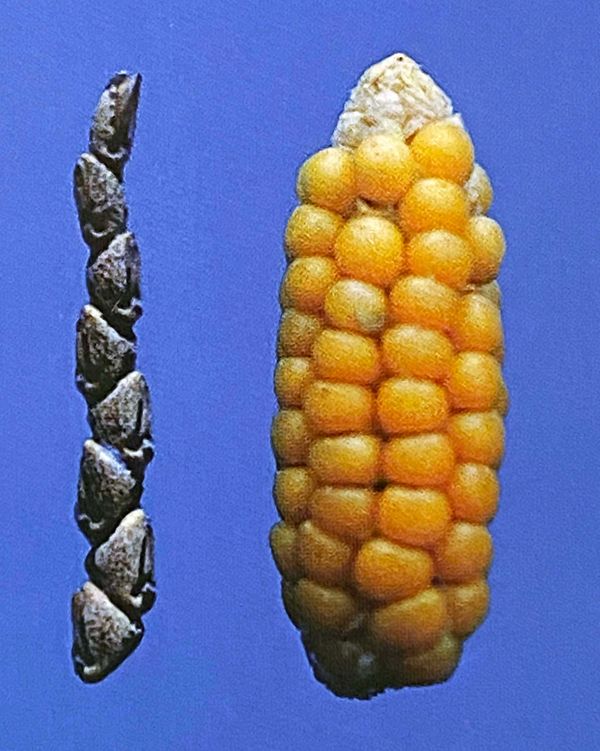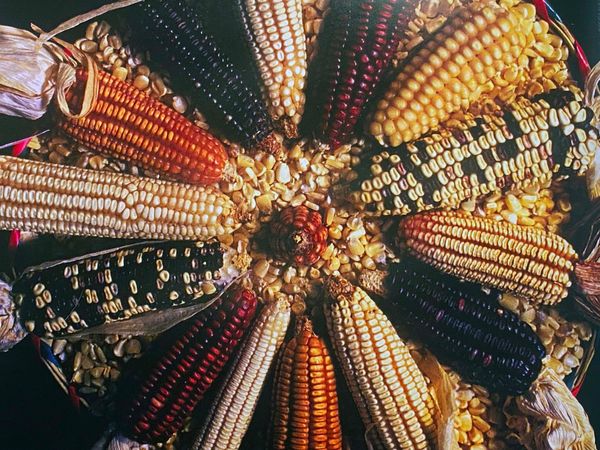(Subscribe to The Brass File to get it e-mailed free to your in-box by clicking on the link at the bottom of this page. Thank you.)
Story By Michael Kaneb
Mexico has their own National Maize Day (Día Nacional del Maíz) which they celebrate on September 29. Guatemala celebrates their own version of this holiday on August 13. So what about the United States? You might not have known, but there is a small campaign to popularize the fourth Friday of November as National Maize Day in the USA.
This relatively unknown holiday was started 17 years ago by an American artist named Corinne Lightweaver. “Maize Day commemorates the First Nations of the Americas and the central role of corn in these cultures and cuisines,” Lightweaver writes in a blog post explaining the day. “I wanted to create a holiday to focus on the wonders and victories of Native Americans.”
The invention and proliferation of corn (also known as maize) is certainly one of the greatest accomplishments and victories of indigenous people of these continents. The word maize comes from mahiz, from the indigenous Arawak people of the Caribbean. Meanwhile, the word corn comes from the Proto-Germanic word kurną, meaning seed or grain, which is the same root word of the English word kernel. For some reason, corn became the standard term for this plant among American English-speakers.
According to archaeological evidence, maize (also known as corn) (Zea mays) was first developed by indigenous people approximately 10,000 years ago in the area of southern Mexico and Guatemala, also known as Mesoamerica. Believe it or not, corn is a grass species. It took a long time for scientists to even be able to identify the previous ancestor of this plant. Today the general consensus is that maize is a descendant of a grass called Teosinte. It is astounding to look at an ear of corn side-by-side with a head of teosinte. They look very different from each other, a testament to the prowess of indigenous farmers.

Corn is descended from a wild grass called Teosinte. |
As if creating a hearty, bountiful crop out wild grass wasn’t enough, indigenous people also found an ingenious way to prepare this food, to optimize its nutritional value. They did this by soaking the kernels in water with ashes before cooking. This process is called nixtamalization, it is the first step to making masa which is the base ingredient of toritllas, tamales, and many other indigenous staple preparations. It’s the same process used to make hominy, although today it is most common to use lime (the mineral) to make the alkaline solution necessary for the process. The hulls of the kernels are broken down and the niacin (Vitamin B3) inside becomes available to the human digestive system, while harmful phytotoxins in the corn are simultaneously neutralized.

Corn was worshipped by indigenous people in the Western Hemisphere. |
For those who don’t know, maize is much more than just a food for Native Americans, it is regarded as an especially sacred being, a deity, a god and/or goddess, often a mother goddess. Many Native Americans give this plant the reverential name “Corn Mother.” Maize features prominently in creation stories from tribes up and down the continent, from the Maya all the way up to the Mohawk. The plant is not only incorporated into ceremonies and traditions, it is the very foundation of many such customs, like the annual Green Corn Ceremony observed by many native Tribes of the eastern part of the continent.

A Green Corn Festival is annually celebrated in Washington, Connecticut. |
Lightweaver wants to use National Maize Day to empower native and non-native people to learn the true history of the first nations, with maize as the vehicle. “What mattered most to me was that these cultures be celebrated as living cultures,” Lightweaver writes. This challenges the common myth that Native Americans are mostly all gone (exterminated). Correcting this destructive false narrative is a loathsome burden for Native people today. The United American Indians of New England, organizers of the annual Day of Mourning protest, boldly declare: “We Are Not Vanishing. We Are Not Conquered. We Are As Strong As Ever.” This special plant can offer us a lot, and it can be vital in accomplishing monumental victories for healing systemic injustices and growing racial equity.

